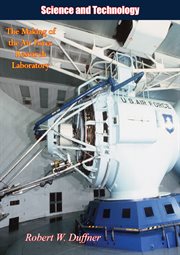Nonfiction
eBook
Details
PUBLISHED
Made available through hoopla
DESCRIPTION
1 online resource
ISBN/ISSN
LANGUAGE
NOTES
Chief of the Laboratory's history office in Albuquerque, Duffner traces how the US Air Force consolidated 13 separate laboratories into one. He begins with a discussion of why the decision was made, then explores how the plan was implemented in the mid-1990s. The thought of consolidating laboratories was not new. Over the last decade, this idea had grown out of the Packard Commission 's blue-ribbon study (begun in 1985) that looked at ways to operate the Department of Defense (DOD) in a more efficient and economical manner. David Packard, a former undersecretary of defense, headed a high-level team of investigators that focused on four core areas that were candidates for change: national security planning and budgeting, military organization and command, acquisition organization and procedures, and government-industry accountability. Packard's final report, A Quest for Excellence (released in June 1986), proposed sweeping reforms, including substantial personnel reductions, to improve efficiency and save money in DOD. President Ronald Reagan directed implementation of the Packard Commission's recommendations in National Security Decision Directive (NSDD) 219, issued on 1 April 1986. The model acquisition-reform plan called for the establishment of "strong centralized policies through highly decentralized management structures."
Mode of access: World Wide Web







